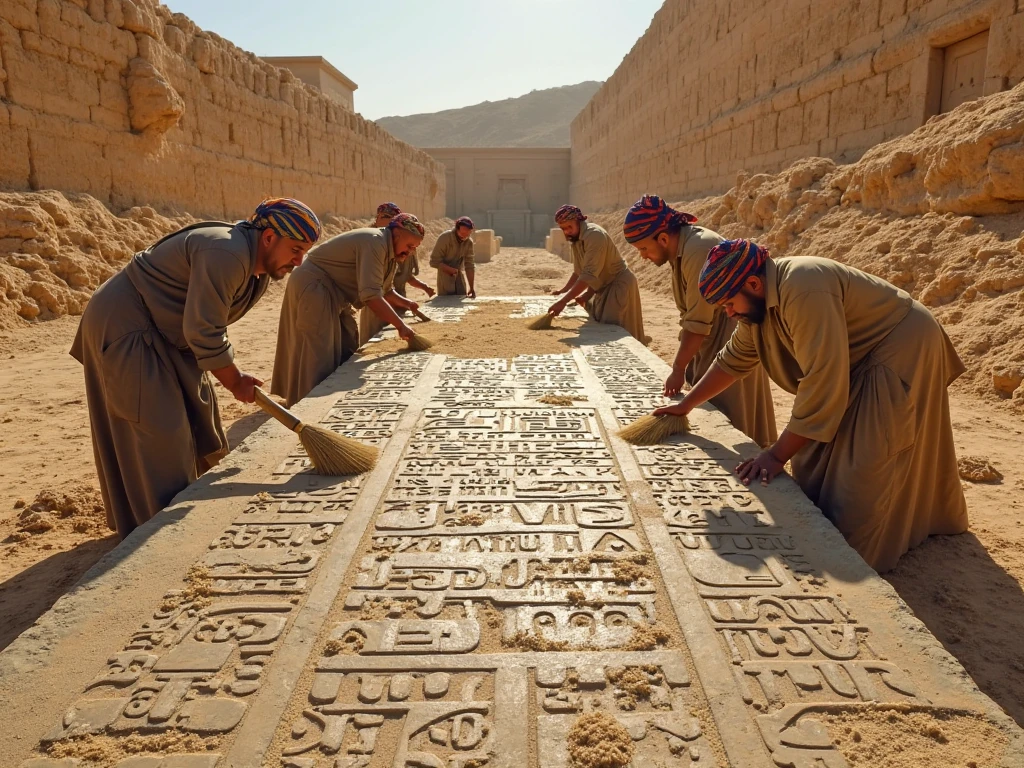A black basalt slab discovered by chance on July 15, 1799, changed the course of history. Buried in sand and forgotten for millennia, the Rosetta Stone unlocked the secrets of a civilization lost to time. But its story isn’t just a tale of dusty hieroglyphs and scholarly rivalry—it offers a living blueprint for anyone determined to break through life’s cryptic barriers. This blog dives deep into the moment of discovery, the drama of decipherment, and the centuries-long impact on science, culture, and the human spirit. Then, with laser focus, we’ll map out a modern game plan you can follow today to harness the Rosetta lesson in your own journey.
Table of Contents
- The World on July 15, 1799
- Napoleon’s Egyptian Ambition
- A Chance Discovery at Rashid
- Anatomy of the Rosetta Stone
- The Race to Crack the Code
- Champollion’s Triumph
- Revolution in Egyptology
- Ripples Through Science and Culture
- Why Breaking Codes Matters Today
- Translating Rosetta’s Lesson to Your Life
- Your 30-Day “Personal Rosetta” Plan
- The World on July 15, 1799
In the closing years of the 18th century, Europe was convulsed by revolution, war and scientific wonder:
- France, fresh from the blood and idealism of 1789, was hungry for glory.
- Great powers jockeyed for colonial spoils in the Mediterranean and beyond.
- Enlightenment thinkers debated how to catalogue every plant, rock and language on Earth.
Against this backdrop, Napoleon Bonaparte dispatched an expedition to Egypt—part army, part scientific corps. Their mission blended conquest with curiosity. Scholars, artists, naturalists and engineers signed on, each hoping to glimpse the cradle of civilization.
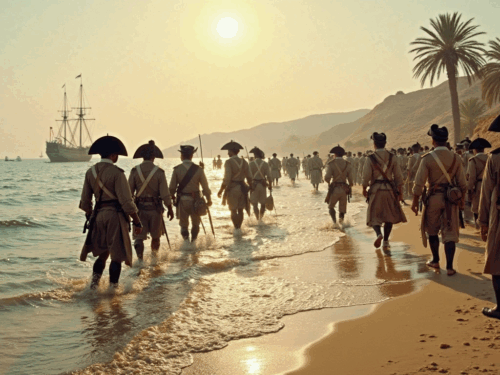 Napoleon’s Egyptian Ambition
Napoleon’s Egyptian Ambition
Napoleon’s motives weren’t purely military. He envisioned an empire built not just on muskets and cannons but on knowledge. To that end, he brought along more than 150 scholars—today called the savants—tasked with documenting Egypt’s antiquities, geography and living customs.
Key players on the expedition:
- Gaspard Monge: Mathematician charting the Nile’s cataracts.
- Étienne Geoffroy Saint-Hilaire: Naturalist cataloguing flora and fauna.
- Dominique Vivant Denon: Artist sketching temple reliefs and grand monuments.
They set up workshops in Cairo and Rosetta (Rashid), copying inscriptions block by block. The goal: gather every scrap of data before the Ottoman forces or rival powers could sweep in.
- A Chance Discovery at Rashid
The turning point came on a dusty July afternoon in 1799 near the port town of Rashid (modern Rosetta). French Captain Pierre-François Bouchard supervised the demolition of an old fort’s wall. As they pried loose a granite slab to use as fill, an Egyptian laborer spotted strange lines carved in three distinct scripts.
What happened next:
- The work crew cleared sand and rubble, revealing more text.
- Bouchard recognized one of the scripts as Greek—an accessible key.
- They hauled the stone to the military encampment, where artists made watercolor copies.
This accidental find would prove far more valuable than beach sand or limestone blocks. It became the keystone in a linguistic mystery that stretched back 2,000 years.
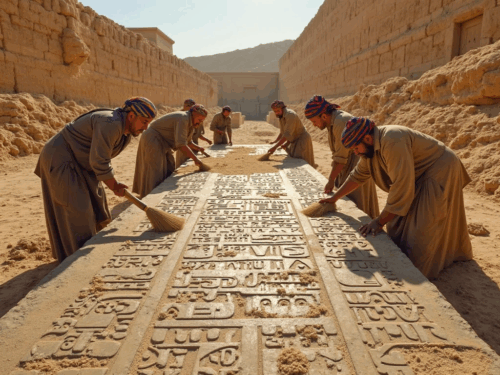 Anatomy of the Rosetta Stone
Anatomy of the Rosetta Stone
The Stone itself is deceptively simple in shape: roughly rectangular, 114 cm tall, 72 cm wide, 28 cm thick. But its surfaces carry a triple‐layered decree issued in Memphis in 196 BC. Each script plays a distinct role:
- Hieroglyphic: Sacred text used by priests, carved at the top.
- Demotic: The everyday script of the people, occupying the middle.
- Ancient Greek: The administrative language of Ptolemaic rulers, at the bottom.
By placing the same decree in three scripts, Ptolemy V’s priests ensured broad comprehension across social classes. Ironically, this imperial outreach laid the groundwork for modern scholars to decode hieroglyphs—a language dormant since roughly 400 AD.
- The Race to Crack the Code
Word of the Stone spread swiftly through Europe’s salons and academies. Two major camps formed:
- British Scholars: After Britain seized Egypt in 1801, the Stone was shipped to London’s British Museum.
- French Philologists: French linguists, determined to outshine their rivals, worked from Denon’s watercolor copies.
Both sides faced daunting puzzles:
- How do thousands of hieroglyphic signs map onto meaning?
- Which Greek words correspond to which hieroglyphs or demotic characters?
- Was hieroglyphic writing purely pictorial or phonetic?
Daily bulletins in scholarly journals detailed fresh hypotheses. Some believed hieroglyphs were mystical symbols, others insisted on an alphabetic principle. Teams cross‐referenced coin inscriptions, Coptic dialects and bits of Greek papyri. Progress was painstakingly slow.
- Champollion’s Triumph
Jean-François Champollion, a prodigious French linguist, obsessed over the Stone’s puzzles. His breakthrough arrived in 1822:
- He noticed that the cartouches (ovals) enclosing royal names appeared consistently.
- By matching Greek names of Ptolemy and Cleopatra to hieroglyphic signs, he deduced 14 phonetic characters.
- Gradually, he expanded this to hundreds of signs, revealing both phonetic and ideographic uses.
Champollion’s Lettre à M. Dacier announced to the Académie des Inscriptions: “Je tiens ma pierre” (“I hold my Stone”). In that moment, ancient Egypt’s voice spoke again after 1,400 years of silence.
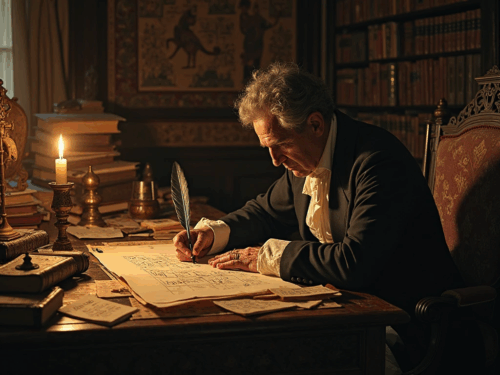 Revolution in Egyptology
Revolution in Egyptology
With hieroglyphs finally legible, a floodgate opened:
- Temples, tombs and inscriptions across Upper Egypt yielded names, dates and rituals.
- Papyrus scrolls, once unintelligible, recounted court intrigues, legal cases and everyday life.
- Scholars charted pharaonic lineages and historic campaigns with newfound precision.
Within decades, institutions like the British Museum and Louvre assembled vast Egyptological collections. Universities established chairs in ancient Near Eastern languages. By the mid-19th century, “Egyptology” became a defined academic discipline.
- Ripples Through Science and Culture
The Rosetta breakthrough touched more than archaeology:
- Linguistics: Bolstered theories of comparative philology and the idea of language families.
- Anthropology: Inspired explorers to seek other “Rosettas” in Maya codices, cuneiform tablets and Indus seals.
- Popular Imagination: From Victorian Egyptomania to modern blockbuster films, the mystique of hieroglyphs fueled art, literature and fashion.
Museums housed monumental obelisks and towering statues. Fashion houses adorned dresses with stylized cartouches. Even steamship lines named vessels Rosetta to convey exoticism and discovery.
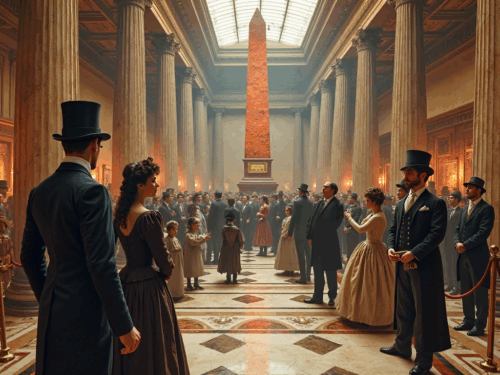 Why Breaking Codes Matters Today
Why Breaking Codes Matters Today
Every time we peer into a once‐shut world—genetic code, digital encryption, lost manuscripts—we stand on the Rosetta Stone’s shoulders. Its legacy teaches us:
- Persistence Pays: Decipherment took 23 years of painstaking work.
- Interdisciplinary Power: Linguists, artists and soldiers all contributed fragments of understanding.
- Bridge-Building: The Stone united scripts and cultures separated by time, reminding us that shared meaning fosters connection.
In our hyperconnected age, we still face impenetrable barriers—overwhelming data, competing value systems, self-doubt. The Rosetta journey shows that a single breakthrough, combined with collaborative resolve, can crack even the hardest puzzle.
- Translating Rosetta’s Lesson to Your Life
Imagine your biggest challenge—a stalled career transition, a tangled personal relationship, a creative block. You stand before an inscrutable wall. The Rosetta method offers a blueprint:
- Gather Multiple Perspectives
- List how different stakeholders view the issue (yourself, a mentor, a neutral friend).
- Treat each viewpoint like a distinct script.
- Look for Repetition and Patterns
- Identify phrases, behaviors or habits that recur (your own or others’).
- Highlight these like cartouches—they likely contain key meaning.
- Cross-Reference with Known Anchors
- Anchor your analysis to a “known language”: facts you trust, past successes, clear data.
- Map uncertain elements onto these anchors.
- Iterate Phonetically and Ideographically
- Test small symbolic interpretations (a smile means reassurance, a brief pause signals hesitation).
- Then explore deeper narrative meanings.
- Collaborate Across Disciplines
- Bring in a friend from a different field: a marketer, a programmer, an artist.
- Let them see your problem through fresh lenses.
Every step echoes the Rosetta process: from accidental find to systematic workshop, from single clue to full‐scale translation.
- Your 30-Day “Personal Rosetta” Plan
Below is a concrete, day-by-day roadmap. By Day 30, you’ll have not only a decoded perspective but a clear action strategy for whatever challenge you face.
Week 1: Discovery & Documentation
- Day 1: Define your “stone”—the problem you can’t yet read.
- Day 2–3: Journal every encounter with the issue. No filter.
- Day 4–5: Sketch a mind-map of recurring words, emotions or events.
- Day 6–7: Identify three “known scripts” (facts, metrics, outcomes you understand).
Week 2: Comparative Translation
- Day 8–10: Invite two trusted collaborators for 1-hour brainstorming sessions.
- Day 11–12: List recurring themes each observer spots.
- Day 13–14: Align those themes with your mind-map from Week 1.
Week 3: Pattern Analysis & Hypothesis
- Day 15–16: Highlight the top five most repeated patterns.
- Day 17–18: Draft three “translations”—possible interpretations of those patterns.
- Day 19–21: Test each translation in real life; gather feedback.
Week 4: Synthesis & Action
- Day 22–23: Refine your favored interpretation into a clear insight.
- Day 24–25: Design a 90-day action plan based on that insight.
- Day 26–28: Share your plan with an accountability partner; adjust based on input.
- Day 29–30: Commit publicly—via journal, social post or conversation—to your first milestone.
 Conclusion
Conclusion
The Rosetta Stone stands as a monument to human curiosity, collaboration and perseverance. Discovered in a moment of happenstance, decoded through decades of tenacity, it reshaped our understanding of an ancient world. Today, the same principles—gathering diverse data, spotting patterns, cross-referencing anchors and embracing interdisciplinary teamwork—can unlock your own life’s mysteries. Follow the 30-day plan above, and you may find that your personal challenges are not impenetrable walls but undeciphered scripts waiting for your breakthrough.
Here’s to excavating meaning, one glyph at a time, and crafting your own modern Rosetta Stone. Good luck—and happy decoding!

